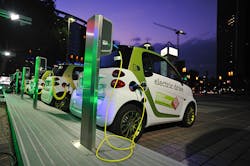This year certainly hasn’t been dull, given COVID-19 and the U.S. presidential election. On the downside, there have been a host of hurricanes, continuing human conflicts, famine, shootings, and multiple business sectors that were totally trashed. On the plus side, everyone is discovering the joys and hassles of video conferencing and virtual tradeshows. Likewise, the stock markets continue to rise and fall while the pace of new technology remains vigorous.
In many ways, 2021 will be like 2020 when it comes to technology. Artificial intelligence (AI) and machine learning (ML) will grow in importance and the number of hardware and software alternatives will make a designer’s job that much harder given the number of tradeoffs involved. The opportunities are increasing as the ability to put AI/ML on the edge is becoming practical. It may be the start of a swing toward a personal assistant without the need to be connected to the cloud all of the time.
Even as the edge becomes smarter, the cloud and enterprise continue to transform what a server looks like. Disaggregation is allowing for easier build out, but also incorporation of technologies from SmartNICs to SmartSSDs is changing how storage, communication, and computation are done. Developers also need to pay attention to trends like the growth of RISC-V and FPGAs in almost every arena.
Of course, we cover a lot more than just the computation side of electronics. The latest changes with gallium nitride (GaN) and silicon carbide (SiC) on the power-management side of things are just as important, as they have proven useful in everything from electric cars to power distribution (see figure). At the other end of the spectrum are battery-sipping solutions where low quiescent current (IQ) and efficiency are critical design factors.
5G and other wireless technologies are having their ups and downs. 5G development and deployment moves onward, but many of the benefits will be in the future, given COVID-19 and the limits on congregation near 5G access points like stadiums. The additional time will help for IoT support, which is still in the works and different from the blazing speeds touted for streaming to smartphones and tablets. It may also allow Wi-Fi to make inroads. Wi-Fi mesh and even Bluetooth mesh will play a part in IoT’s growth.
We will continue to deliver our coverage of these areas in print as well as online with special digital issues and ebooks. We look forward to bringing the best in-depth coverage in 2021. So stay safe—I look forward to interacting with everyone online and in print and hopefully in-person in the near future.


